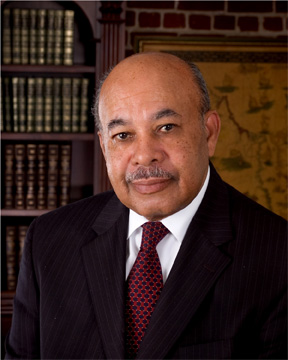[Publisher’s Note: As part of an ongoing effort to bring original, thoughtful commentary to you here at the FlashReport, I am pleased to present this column from Ward Connerly – Flash]
 It is often said that the Constitution of the United States of America is “colorblind.” While it is true that this precious document makes no reference to “race” or skin color, the institution whose mission it is to interpret the Constitution – the Supreme Court – has generally not exercised colorblindness in its constitutional interpretations over the years.
It is often said that the Constitution of the United States of America is “colorblind.” While it is true that this precious document makes no reference to “race” or skin color, the institution whose mission it is to interpret the Constitution – the Supreme Court – has generally not exercised colorblindness in its constitutional interpretations over the years.
The most serious attack on the colorblind principle is what is commonly called “affirmative action.” A creation of the 1960s, this program, or concept, relies on the classification of American citizens into separate demographic groups. Once classified, some of the groups are targeted for special treatment if they are deemed “underrepresented” or viewed as potential contributors to “diversity.”
On June 23, 2003, the Supreme Court embedded the diversity rationale into affirmative action law when it held in the Grutter v. Bollinger case that diversity is a compelling interest in higher education, and that race can be one of a number of factors that can be taken into consideration to achieve the ”educational benefits of a diverse student body.”
This decision had the effect of making it appear that the use of race had become a permanent, unmovable factor in the admissions process of American higher education. Such is the case because “diversity” is a factor that is constantly in motion. What is considered “diverse” in one year may not be in another.
In various Supreme Court decisions, the court has signaled its objection to race-based preferences and its desire to end them as soon as possible. In the previously mentioned Grutter decision, former Justice Sandra Day O’Connor opined that race preferences should not be necessary by 2028. There had been much speculation, in fact expectation, that the recently decided case of Fisher v. University of Texas would be the vehicle for hastening the end of preferences.
In reality, however, the Fisher case failed to live up to the expectation of anti-preference advocates. The 7-1 decision delivered by Justice Kennedy was a major disappointment.
This case was, perhaps, one of the best opportunities available to right the years of wrongs perpetrated by the Supreme Court with regard to the issue of race preferences. Obviously, the Court is evenly divided with four conservatives and four liberals on the court and with Kennedy being the swing vote. Kennedy is 76 years old and President Obama has three and a half years left in his second term. Let us hope that Kennedy remains healthy for the remainder of Obama’s term.
For my part, I have little faith that most American universities currently using race preferences will seek out and use race neutral means of admissions, as the court prescribed in Fisher. For example, there is a constitutional amendment (SCA5) pending in the California Legislature that, if approved by the voters, would enable higher education in the Golden State to discriminate on the basis of race, ethnicity or any other factors deemed desirable in California higher education. This proposal has the backing of the California Legislative Latino Caucus, which is, without a doubt, the most influential caucus in the California Legislature.
Contrary to expectations, and as stated previously, the Fisher decision did not advance the cause of colorblind admissions. Although the decision strengthened “strict scrutiny,” that is about all that was done by the Fisher decision. More egregiously, the diversity rationale was left intact, although somewhat wounded. Those who are familiar with higher education and affirmative action know all too well that the diversity rationale is a sham. High school seniors who are admitted based on the claim that they will “contribute to diversity” arrive at the university hoping to soak up enough information from their professors to pass through their classes. The idea of participating in “a robust exchange of ideas” is far removed from their minds.
I would be one of the first to admit that we have come a long way in the fight to end race preferences, the fight that began at the University of California Board of Regents in 1995. A policy that was virtually untouchable in 1995 is now on the ropes fighting for survival. But, affirmative action is a policy that race advocates and other leftists will not walk away from without a vigorous fight. They live on for what is likely to be several more years harming Asians and whites and damaging the intended beneficiaries – blacks, Latinos and Native Americans. Even greater damage is done to American values of individual merit and individual rights.
Recent polls confirm that roughly 70% of the American people oppose preferential treatment based on race or ethnicity. While this figure is at an all-time high, the American people have consistently opposed race-based preferences.
____________________________________________________________
Ward Connerly is president of the American Civil Rights Coalition and author of “Lessons from my Uncle James: Beyond Skin Color to the Content of Character.” Connerly served as a University of California Regent, and he led the state to pass Proposition 209, a landmark civil rights initiative.

